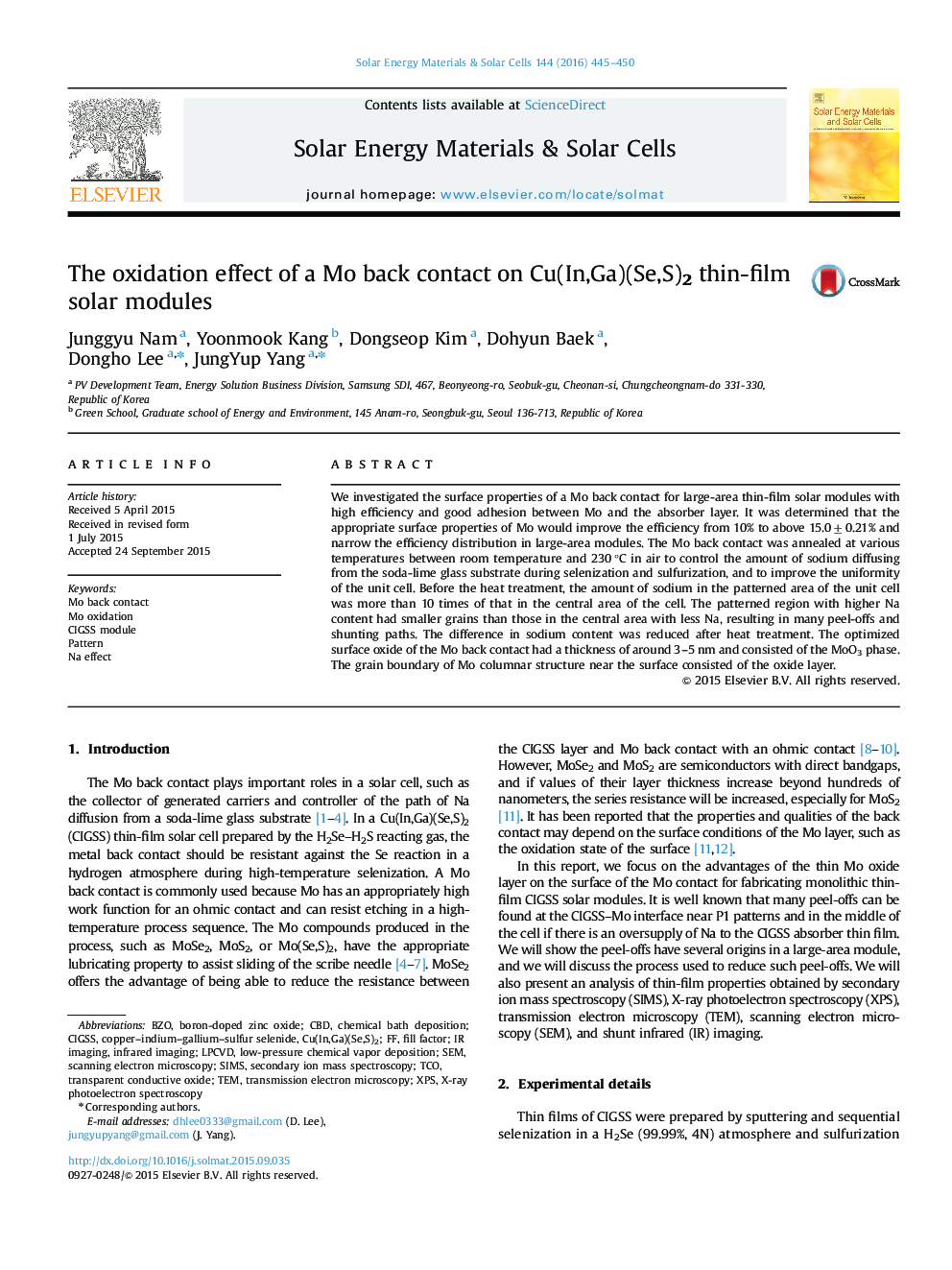| Article ID | Journal | Published Year | Pages | File Type |
|---|---|---|---|---|
| 6534938 | Solar Energy Materials and Solar Cells | 2016 | 6 Pages |
Abstract
We investigated the surface properties of a Mo back contact for large-area thin-film solar modules with high efficiency and good adhesion between Mo and the absorber layer. It was determined that the appropriate surface properties of Mo would improve the efficiency from 10% to above 15.0±0.21% and narrow the efficiency distribution in large-area modules. The Mo back contact was annealed at various temperatures between room temperature and 230 °C in air to control the amount of sodium diffusing from the soda-lime glass substrate during selenization and sulfurization, and to improve the uniformity of the unit cell. Before the heat treatment, the amount of sodium in the patterned area of the unit cell was more than 10 times of that in the central area of the cell. The patterned region with higher Na content had smaller grains than those in the central area with less Na, resulting in many peel-offs and shunting paths. The difference in sodium content was reduced after heat treatment. The optimized surface oxide of the Mo back contact had a thickness of around 3-5 nm and consisted of the MoO3 phase. The grain boundary of Mo columnar structure near the surface consisted of the oxide layer.
Keywords
Mo back contactBZOTCOLPCVDCBDPatternTransparent conductive oxideBoron-doped zinc oxideTemIR imagingInfrared imagingLow-pressure chemical vapor depositionSIMSSecondary ion mass spectroscopyX-ray photoelectron spectroscopyXPSFill factorSEMScanning electron microscopyTransmission electron microscopychemical bath deposition
Related Topics
Physical Sciences and Engineering
Chemical Engineering
Catalysis
Authors
Junggyu Nam, Yoonmook Kang, Dongseop Kim, Dohyun Baek, Dongho Lee, JungYup Yang,
